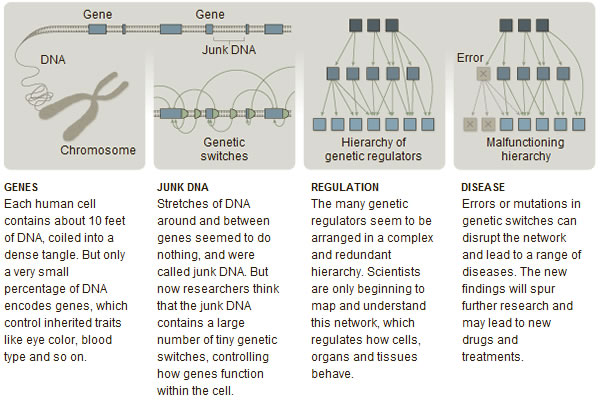
You'd be surprised to learn that 98% of human DNA actually don't encode for anything. Some bits and parts act as gene regulators and switches, but for the most part, they're just there because they're there. In 1972, geneticist Susumu Ohno coined the term "junk DNA" for the noncoding part of our genetic material, and the term stuck.
But new studies show that junk DNA is anything but junk:
As scientists delved into the “junk” — parts of the DNA that are not actual genes containing instructions for proteins — they discovered a complex system that controls genes. At least 80 percent of this DNA is active and needed. The result of the work is an annotated road map of much of this DNA, noting what it is doing and how. It includes the system of switches that, acting like dimmer switches for lights, control which genes are used in a cell and when they are used, and determine, for instance, whether a cell becomes a liver cell or a neuron.Gina Kolata of The New York Time explains: here.
“It’s Google Maps,” said Eric Lander, president of the Broad Institute, a joint research endeavor of Harvard and the Massachusetts Institute of Technology. In contrast, the project’s predecessor, the Human Genome Project, which determined the entire sequence of human DNA, “was like getting a picture of Earth from space,” he said. “It doesn’t tell you where the roads are, it doesn’t tell you what traffic is like at what time of the day, it doesn’t tell you where the good restaurants are, or the hospitals or the cities or the rivers.”
The new result “is a stunning resource,” said Dr. Lander, who was not involved in the research that produced it but was a leader in the Human Genome Project. “My head explodes at the amount of data.”

No comments:
Post a Comment